
Four hardy souls braved the windy conditions, to join us for a wildlife walk this week in the Torastan area of Coll.
We began by venturing out onto the moors. Despite the harsh conditions, wildlife and people have both managed to forge a living up here. We saw signs of past human activity, including rough walls and small enclosures associated with summer grazing and modest agriculture.

Greg explained that the rocks themselves bear the scars of the last ice age. Over the past two million years, huge layers of slowly moving ice gave Coll its flat, rolling character, dumped huge boulders (known as erratics) on hill tops, and left parallel score marks in the rocks.

We saw lots of interesting plants, including: the carnivorous Butterwort, a yellow starfish of a plant that traps flies and other insects on its sticky leaves; the beautiful Field Gentian; the yellow-flowered Tormentil; the delicate pencilled pink flowers of the Bog Pimpernel; and the ubiquitous Devil’s-bit Scabious.
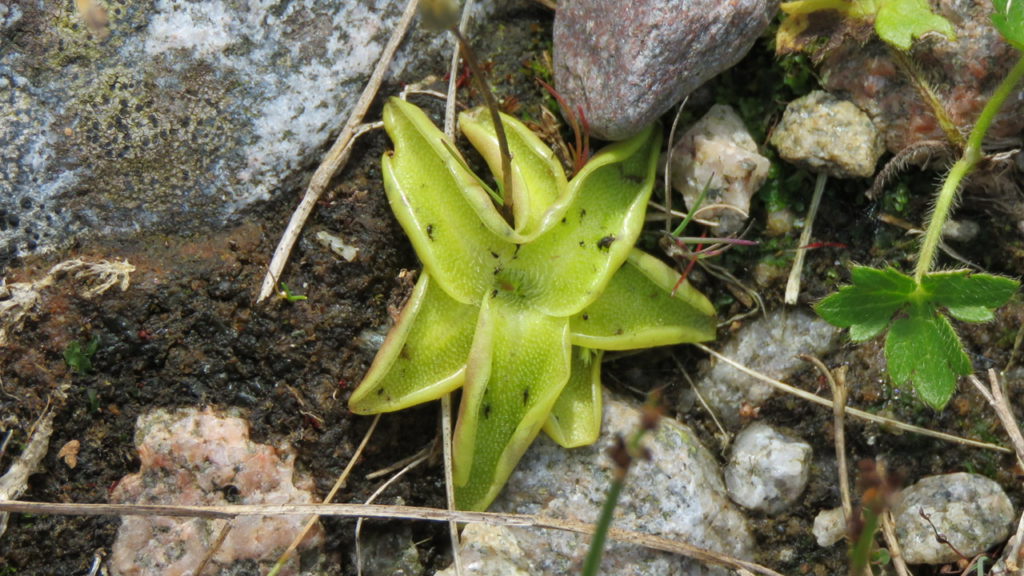
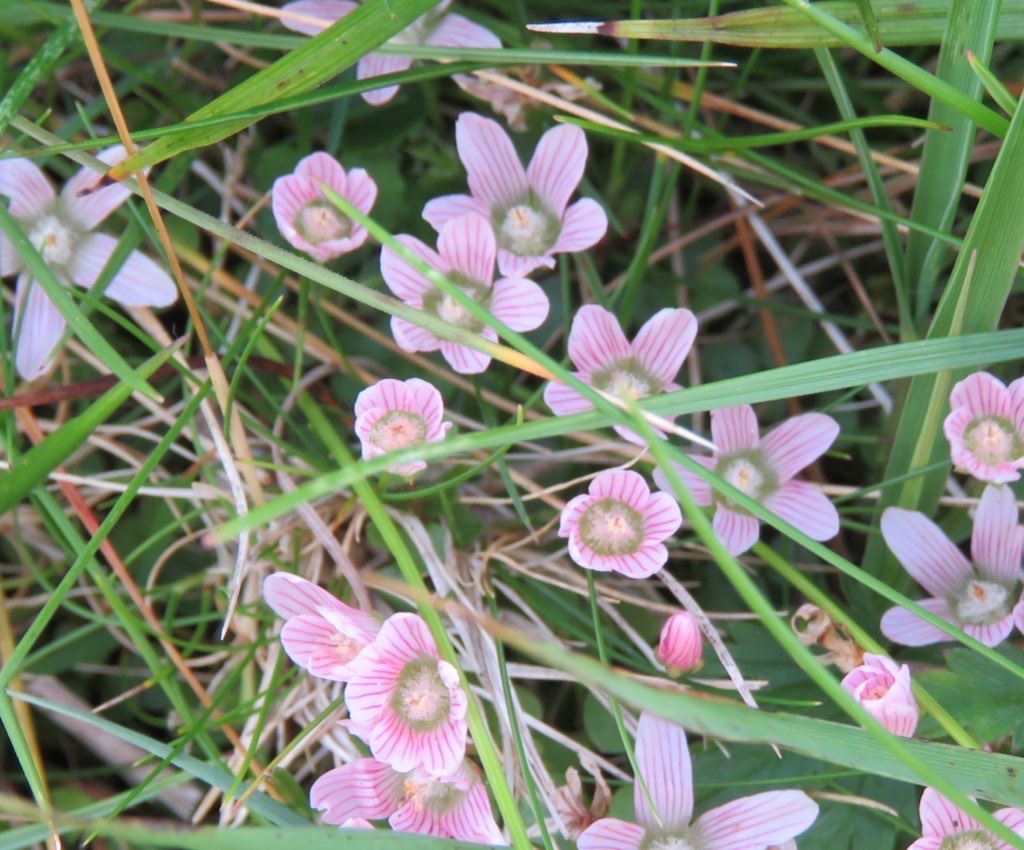
A flash of white rump as a Wheatear hurried away reminded us that its name derives from the old English ‘white-arse’.

Then down into the dunes. Here, the sand is mostly composed of shell fragments giving it a calcareous character where plants we usually associate with limestone country occur. Among these was the Wild Carrot, a shorter version of our domestic food plant, bearing a fleshy white root which does indeed smell and taste of carrot, though (as Ali pointed out) you’d need more than a few to complement a Sunday roast! We also wondered what the dark red floret at the centre of the white crown of flowers might be for – attracting pollinators or deterring pests? Recent research suggests the latter.

On the shore, we saw more evidence of past glaciation with a huge boulder field dumped by the retreating glacier – made up of many different types of rock from all over Scotland.

We then visited the impressive Queen’s Staircase, a basalt dyke cutting through the bedrock. This was formed as a result of volcanic activity when the Highlands were being formed. Molten magma, under huge pressure, was forced along a crack in the surrounding rocks, running in a straight line for several hundred metres. This quickly cooled and set, forming a hard, black, fine-grained basalt, which is clearly visible running out to sea.

Halfway along it, there is a deep, sea-worn hole filled with seawater, known locally as the wishing well, into which coins have been dropped for luck. Bryan enthusiastically stripped off and plunged in his arm in hope of doubloons, but was only rewarded with a 21st Century penny, which he dutifully returned!
Our final venture into the sand dunes was rewarded with a veritable chorus of unassuming Frog Orchids (is that the right collective term?) and also a late Pyramidal Orchid. These led us into a conversation about the importance of management, like grazing or cutting, to keep the grassy sward open. This prevents the grassy thatch becoming too thick, enabling wild flowers to proliferate.
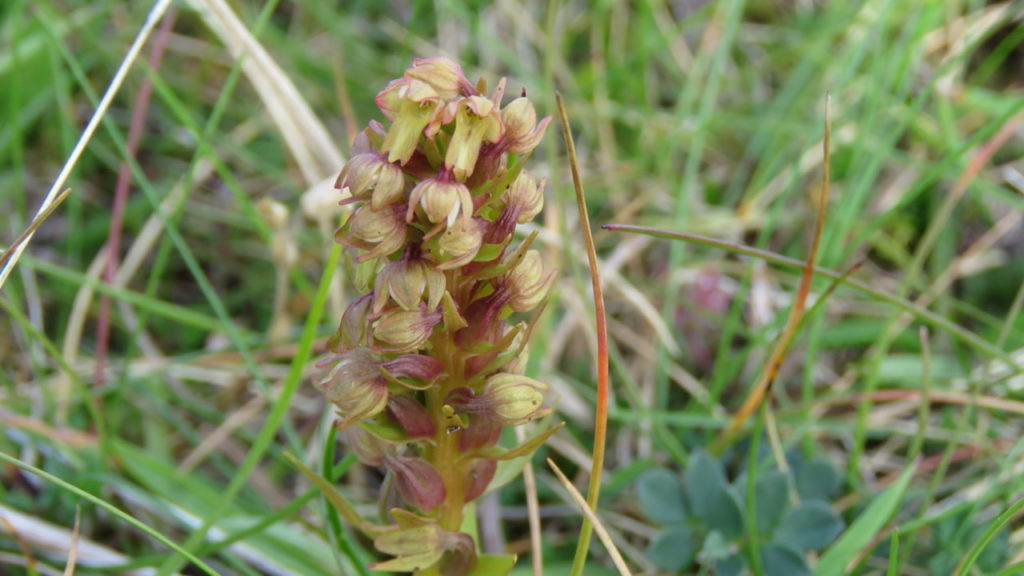
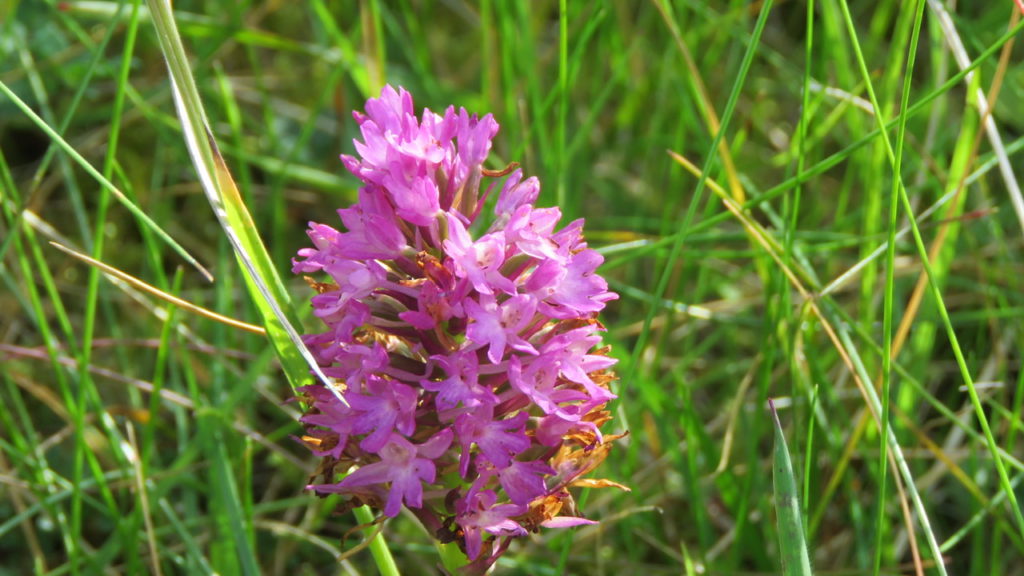
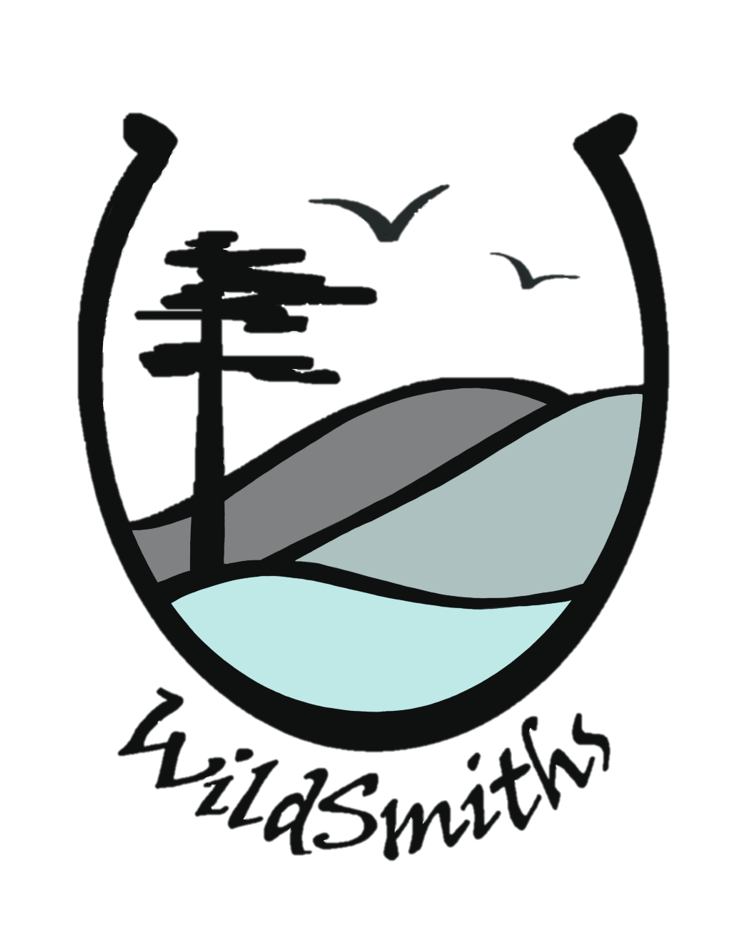

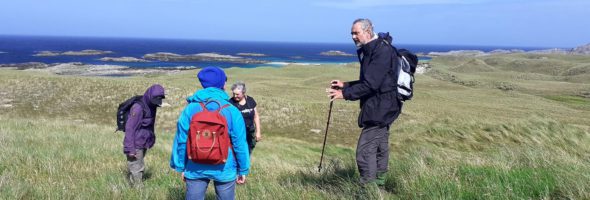
Beautifully written
Thanks Glyn – it was a busy walk!